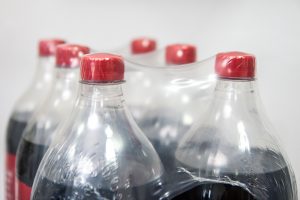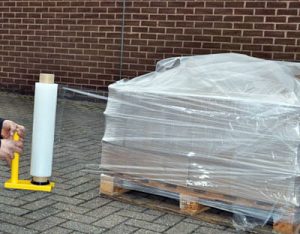4 Differences Between Stretch Film and Shrink Film
One of the biggest “verbiage” misuses we see in the industry has to be shrink film vs stretch film and everything in between like plastic wrap, cling wrap, or the like. If you get these terms confused also you are not alone. Let’s unpack it!
It’s true that both shrink and stretch films are designed to unitize products onto pallets and both are generally made from polyethylene resins. Another truth, shrink films are produced on blown film lines and stretch films can be produced on either blown or cast film lines. Outside of those similarities, the two packaging systems don’t have a lot of other common characteristics.
1. Material Make-Up
Shrink films contain a high percentage of low density polyethylene (LDPE), which is the same type of resin used to make bread bags and newspaper overwrap sleeves. When fabricated under very specific parameters, LDPE gives shrink film its “shrink” properties. The stress or tension required to make the film contract is frozen in during the fabrication process.
In contrast, most stretch films contain high levels of linear low density polyethylene (LLDPE) and, depending on the end-use application, can stretch from 25 to 300%.
Bottom line: Both films are made out of different forms of plastic, but the characteristics of that plastic make them very different items. Once stretch film is stretched, it relaxes back to give your palletized load a very tight “plastic” wrap effect whereas shrink film doesn’t do any good until you put some heat to it to “shrink” it to the product.
2. How it is Applied
To activate shrink film, a heat source is required such as a heat tunnel, heat gun, or torch. When sufficient heat is applied to the film, it approaches its melting point and the film begins to draw up or “shrink”.
Because the film can only shrink so far, each product to be wrapped has to be matched with a specific film thickness, size, and configuration of film – that is where product application testing comes into play.

Stretch films are either designed to be applied by hand or by machine. Hand films usually have minimal stretch (25-100%) in order to aid the operator in applying the product and are in many ways similar to a large roll of very thin tape or what households might refer to as cling wrap. Machine films on the other hand can have very high stretch levels (150 -350%) and they are applied by automated stretch wrapping equipment.

Bottom Line: Only stretch film can be applied by hand and shrink film – in any instance – must use some form of heat to activate its packaging properties.
3. Load Containment
As shrink film resins go, LDPE does not always have good puncture or tear resistance and has a relatively low load holding force for very heavy palletized loads. In order to provide sufficient load containment and protection for the load, these films are generally several times thicker than most stretch films at face-value. But, that doesn’t mean shrink options should be overlooked quite yet.
Machine stretch films can be configured to exert very high levels of tension on a load if desired, increasing load containment and puncture resistance on otherwise very difficult loads to wrap.
Think of it this way, a company might shrink wrap a pack of soda bottles together, but then once those packs are stacked onto a skid about 10 packs high they might stretch wrap them altogether to secure the load during transit.
Bottom Line: Stretch wrap is usually employed to hold loads and products together on a pallet for transportation or storage purposes. Shrink wrap generally protects single products from dust or weather or can help bundle products together like commonly seen with bottles of water or packs of vegetables. Both films have great value for the right application because they do very different things.
4. Common Applications
Shrink films are good for applications where the object requires five or six-sided protection (top and/or bottom and four sides) or is very large. As mentioned very common items that are shrink wrapped include vegetables, bottled beverage packs, very large items like boats, planes, and industrial equipment – especially if being stored outside for long periods of time.
Stretch film is commonly used when products are being secured to a skid. This can be anything from stacked bricks for landscapers to stacked boxes being shipped to a local retail store.
So, besides stretch film and shrink film having different cosmetic characteristics, you now know that shrink film is generally used to protect a product and stretch film is generally used to secure a product to a skid.
Still have questions on which film would work best for your application? Leave us a comment or shoot us a message so we can discuss recommendations based on your packaging line.
